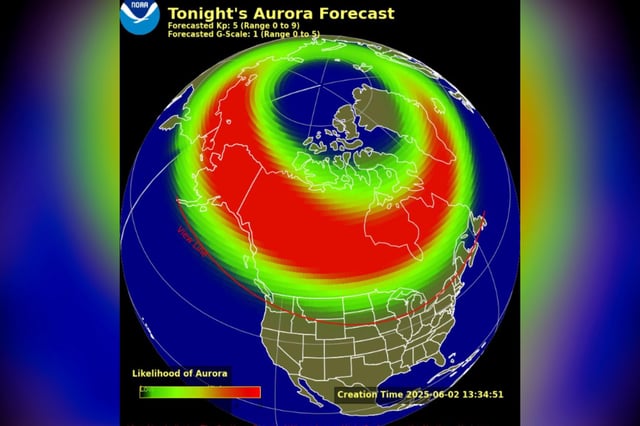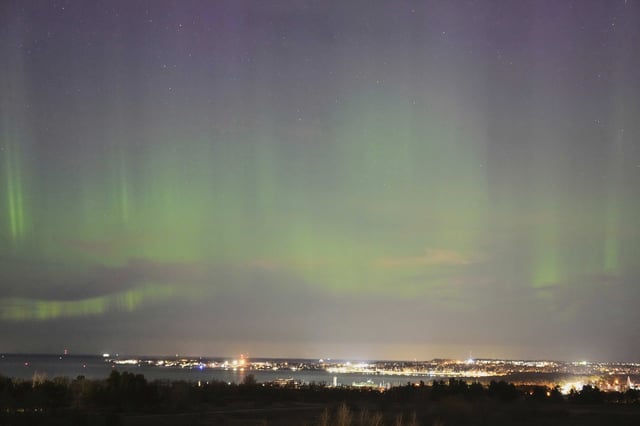Overview
- A June 1 solar eruption unleashed charged particles that sparked G3-level geomagnetic storms around Earth’s poles.
- The aurora borealis has been visible from Alaska through Michigan, with bright displays reported across central Canada and northern UK.
- NOAA and the Met Office report that geomagnetic activity will weaken but continue to produce intermittent auroras into the night of June 3.
- Solar Cycle 25 is at its peak, driving more frequent and intense solar wind events that sustain heightened aurora activity into 2026.
- Stargazers are advised to head to dark, elevated spots away from light pollution between late evening and early morning for the best chance to see the lights.



